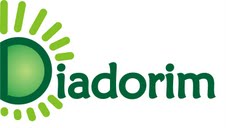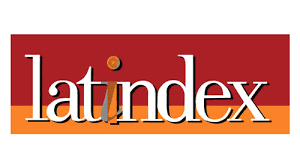ANÁLISE COMPUTACIONAL DA ESTABILIDADE DE PILARES EM CONCRETO ARMADO SUBMETIDOS À FLEXÃO COMPOSTA OBLÍQUA
DOI:
https://doi.org/10.26512/ripe.v2i24.21014Keywords:
Reinforced concrete columns. Biaxial bending. Stability. Nonlinear. Computational.Abstract
Stability analysis of reinforced concrete columns using tables and abacuses often lacks accuracy and leads to more robust structures, with a higher consumption of material (concrete and steel rebars). On the other hand, there are more accurate procedures that derive from detailed models, optimizing the design at the cost of a large number of iterative operations and processes that are not feasible without the use of computers. This paper presents the steps involved in developing a computer code to verify the stability analysis of reinforced concrete columns subjected to axial forces and biaxial bending through computational routines. The computer codes were developed in Matlab, including physical and geometrical nonlinearities, and can be divided into two major parts: (1) characterized by cross section analysis, which is divided into sub-regions for numerical integration, and by varying curvature and neutral axis slope and depth, resistant internal forces and strains are evaluated; (2) a global stability analysis of the structure, where the column is segmented along its height and for each section between the elements a routine evaluates the curvature at equilibrium. The updated deflection is obtained by double curvature integration and provides an additional eccentricity which is added to the initial results into a new iteration. The process is repeated until a convergence criterion is reached or column failure, and thus the final internal forces are computed. The proposed routine results were validated by experimental analysis and finite element simulations with commercial codes Athena and Midas, confirming the validity and efficiency of the present proposal.
Downloads
References
ARAÚJO J.M., 2003, Curso de concreto armado, v3, Dunas.
ASSOCIAÇÃO BRASILEIRA DE NORMAS TÉNICAS. NBR 6118 ”“ Projeto e execução de obras em concreto armado e protendido ”“ procedimentos. Rio de Janeiro 2014.
ATENA ”“ ATENA 3D, Version 5.1.1.11203, Cervenka Consulting.
ATENA, 2014, ATENA Program Documentation Part 1 Theory, Cervenka Consulting.
CARLOS EDUARDO LUNA DE MELO, 2009, Análise experimental e numérica de pilares birrotulados de concreto armado submetidos a flexo-compressão normal, Tese de doutorado em estruturas e construção civil departamento de engenharia civil e ambiental, Faculdade de tecnologia UNIVERSIDADE DE BRASÃLIA.
CLÁSSICOS DA ARQUITETURA: CENTRO DE MECANIZAÇÃO DO BANCO DO BRASIL, Disponível em http://www.archdaily.com.br/br/01-156395/classicos-da-arquitetura-centro-de-mecanizacao-do-banco-do-brasil-slash-irmaos-roberto , Acesso em : 11 Jul, 2016. COMITÉ EURO-INTERNATIONAL DU BÉTON. CEB-FIP,Design Code, 2010,Lausanne, 1993.
EUROCODE 2, Design of Concrete Structures ”“ Part 1: General Rules ans Rules for Buildings, British Standards Institution, UK.
FUSCO, P.B.,1998. Estruturas de concreto: Solicitações normais, LTC
JIM-KEUN KIM e SANG-SOON LEE, 2000, The behavio of reinforced concrete columns subject to axial forces and biaxial bending.
MATLAB, Version 7.10.0.499 (R2010a), 2010, The Language of Technucal Computing
Midas Fea, Version 2.9.6, 2009, Nonlinear and Detail FE Analysis System for Civil Structures
RICARDO LEOPOLDO E SILVA FRANÇA, 1991, Contribuição ao estudo dos efeitos de segunda ordem em pilares de concreto armado.
ROBERTO CHUST DE CARVALHO e LIBÂNIO MIRANDA PINHEIRO, 2013, Cálculo e detalhamento de estruturas usuais de concreto armado, v.2, PINI
SANDER DAVID CARDOSO JÚNIOR, 2014, Sistema Computacional para análise não linear de pilares de concreto armado, Monografia de especialização em gestão de projetos de sistemas estruturais da Escola politécnica da UNIVERSIDADE DE SÃO PAULO.
WALDSON TAKEO WATANABE, 2011, Verificação da Estabilidade de Pilares Esbeltos de Concreto Armado Submetidos à Flexo-compressão Oblíqua pelo Método Exato: Proposta de Programa Computacional, Trabalho de diplomação Departamento de Engenharia Civil, UNIVERSIDADE FEDERAL DO RIO GRANDE DO SUL.
Downloads
Published
How to Cite
Issue
Section
License
Given the public access policy of the journal, the use of the published texts is free, with the obligation of recognizing the original authorship and the first publication in this journal. The authors of the published contributions are entirely and exclusively responsible for their contents.
1. The authors authorize the publication of the article in this journal.
2. The authors guarantee that the contribution is original, and take full responsibility for its content in case of impugnation by third parties.
3. The authors guarantee that the contribution is not under evaluation in another journal.
4. The authors keep the copyright and convey to the journal the right of first publication, the work being licensed under a Creative Commons Attribution License-BY.
5. The authors are allowed and stimulated to publicize and distribute their work on-line after the publication in the journal.
6. The authors of the approved works authorize the journal to distribute their content, after publication, for reproduction in content indexes, virtual libraries and similars.
7. The editors reserve the right to make adjustments to the text and to adequate the article to the editorial rules of the journal.









